The metropolitan commissioner and a retired MMRDA Town Planner discuss the drastic yet badly needed changes they orchestrated for a city that continues to burst at its seams.
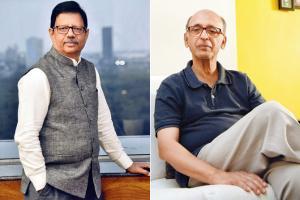
Vidyadhar Phatak and R A Rajeev. Pics/Pradeep Dhivar and Nimesh Dave
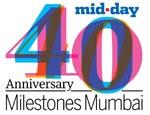 Exactly like the creation of Mumbai's business district, the Bandra Kurla Complex, acted like a catalyst in the 1970s aiding its decongestion and growth, the introduction of the much-needed Metro rail lines promises to open up the city's blocked sinuses or overburdened infra, like magic. We catch up with two top officials who have been right in the middle of this transformation and instrumental in getting things done. Retired MMRDA town planner Vidyadhar Phatak, who describes himself as an urbanist, has been a key figure in the formation of the present-day Bandra Kurla Complex (BKC), while MMRDA's Metropolitan Commissioner RA Rajeev is the man spearheading the Metro Rail revolution in Mumbai with work on 300 km of Metro rail currently going on in the city simultaneously.
Exactly like the creation of Mumbai's business district, the Bandra Kurla Complex, acted like a catalyst in the 1970s aiding its decongestion and growth, the introduction of the much-needed Metro rail lines promises to open up the city's blocked sinuses or overburdened infra, like magic. We catch up with two top officials who have been right in the middle of this transformation and instrumental in getting things done. Retired MMRDA town planner Vidyadhar Phatak, who describes himself as an urbanist, has been a key figure in the formation of the present-day Bandra Kurla Complex (BKC), while MMRDA's Metropolitan Commissioner RA Rajeev is the man spearheading the Metro Rail revolution in Mumbai with work on 300 km of Metro rail currently going on in the city simultaneously.
ADVERTISEMENT
Vidyadhar Phatak:
What was the rationale behind creating BKC? The one big reason.
The proposal to develop Bandra Kurla Complex was first conceived around 1958 by senior bureaucrat SG Barve and team. The plan remained on paper for a while and received no mention in the 1964 development plan. It was only in 1967-70 that it was mentioned for the first time in the Bombay Metropolitan Regional Plan as a solution to decongest the city.
Were there other options considered, if any?
New Bombay was being developed in a parallel manner. The Thane Belapur industrial belt was coming up and so was the Nhava Sheva port. At this point, it was realised that everything could not be moved out of Mumbai and we needed to restructure the city's growth. This was called internal restructuring where things could move from south Mumbai to BKC.
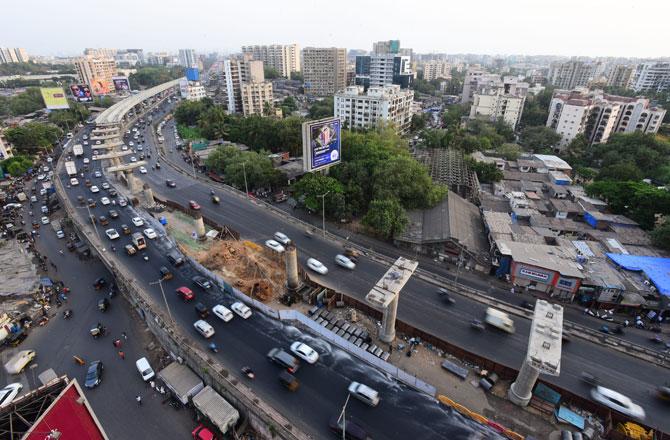
Work on the elevated Metro line currently on at Andheri East
How long did the feasibility study take and how did the plan go ahead ?
It was in the 1973's Regional Plan that Bandra Kurla Complex received a real push and a few years later, the Bombay Metropolitan Region Development Authority was given a mandate to develop it. BMRDA reclaimed the land in a phased manner as advised by the Central Water and Power Research Station.
What were the risks, concerns and worries about going ahead with the project?
Initially, BKC was supposed to decongest south Mumbai. One big project in that direction was to move the Kalbadevi's textile market to this newly created business hub, but that did not materialise as some traders were willing, others not. We had also accounted for transport and had left space for a Bandra-Kurla-Karjat railway corridor that could link Western and Central Railway, but that, too, did not take off, unfortunately.
There is so much emphasis on environment today. How was it back then? Was the project's impact on Mithi discussed in detail?
It was all swamp land in those days and Mahim creek when the work first began in the 1950s. It was only in 1991 that the Coastal Regulation Zone (CRZ) policies came into being and there were a few issues thereafter. And our contention had always been that all the basic work of bringing shape to BKC should be completed before the regulations came into force in the 1990s.
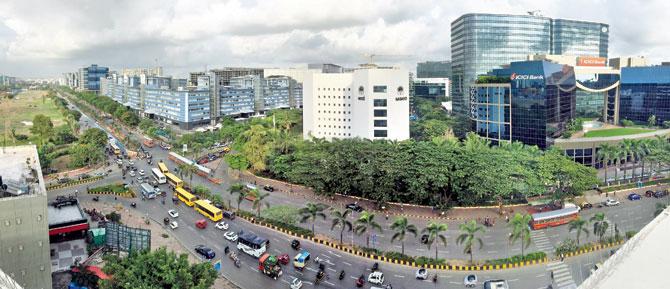
The well-planned business hub that is Bandra Kurla Complex. Pics/Rane Ashish
What were the peculiar difficulties faced while developing BKC?
The real big change came after the economy opened up in 1991. There was a spurt in financial companies and institutions like SEBI, NBFCs and private banks were proliferating. The National Stock Exchange took shape in 1991 and with co-ordination of the likes of diamond merchant Bharat Shah, the diamond bourse was also established. However, as BKC acquired the status of a new financial district of Mumbai, it was realised that it was necessary to make room for smaller establishments that could not have their own plot and building. Around 2002, the plots were opened up for developers, too. This added restaurants and smaller establishments, making BKC more lively.
Post-project, has BKC turned out the way the planners envisioned it to be? What does BKC have to offer in the future years from 2019?
Things have gone very well as per plan but one small thing that could have been done better was the layout of roads etc vis-a-vis pedestrians. The new roads coming up in all directions like the one at Kalanagar, the one at the MTNL end linking the SCLR and the BKC connector , in addition to the two Metro lines and the Bullet train terminus will change connectivity forever. In a way, BKC has now almost reached saturation point. Another important thing is to not just develop east west links, but links with the hinterland, too. For example, the two east west Metros that are coming up should link areas of Navi Mumbai for the real benefit to be seen. The Lokhandwala-Kanjurmarg Metro, for example, needs to be taken to places like Ghansoli in Navi Mumbai and other untapped areas on the east south of Kalyan so that there is overall expansion. The idea is to open up new areas for development through strategic investment in transport infrastructure.
R A Rajeev:
What was the rationale behind planning the Mumbai Metro project?
Mumbai is the heart of commercial and trade activities in India. More than 12 million people travel daily by public transport, with modal share of 52 per cent by rail and 26 per cent by bus. The existing system is under extreme pressure and the role of the bus system is mostly limited to providing feeder services to the railways. Due to geographical constraints, there is limited scope to expand existing road and rail networks. Many pockets in the island city and suburbs are not served by the rail network. A 12-car suburban train with a super dense crush capacity of about 2,400 people (standing + sitting) is carrying more than 5,000 people. Due to the inadequate capacity of the Mass Transit System, the share of public transport declined from 88 per cent to 78 per cent during the last two decades.
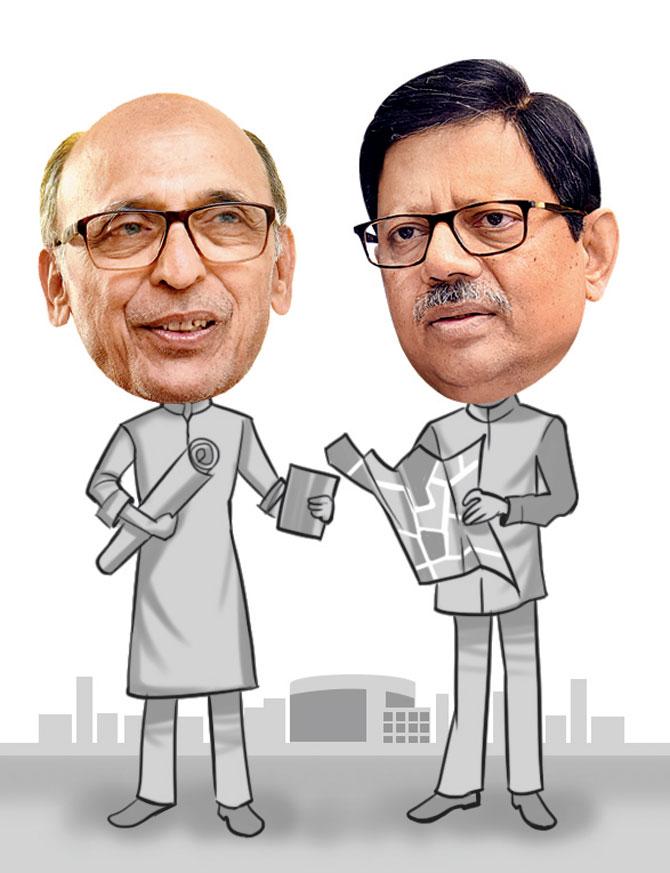
Illustration/Ravi Jadhav
What were the other options considered, if any?
Metro was considered the best option. It has been proven, worldwide, to be the best and most reliable transportation system.
How long did the feasibility study take to prepare the master plan for Metro?
MMRDA prepared a Master Plan through M/s. Delhi Metro Rail Corporation (DMRC) who were assisted by TATA Consultancy Services (TCS) and Indian Institute of Technology (IIT), Mumbai in May 2003. The Master Plan has since been partly modified, keeping in mind the recommendations made in the Comprehensive Transport Study, to cover a total length of 172 km. Eventually the total length of Metro Corridors will be 337 km and the aim is to complete most of these by 2024. When all these metro lines are completed, the system will have the capacity to carry more than 100 lakh commuters daily which is 1.3 times the capacity of the suburban railway system.
What were the risks, concerns and worries about going ahead with the project like Metro in congested areas of Mumbai?
The city faces paucity of land and a space crunch. The roads are not wide enough. The number of vehicles and people on roads is almost unmanageable. For such concerns and proper risk management, comprehensive studies have been and are being carried out during feasibility and DPR (Detailed Project Report) stages. Accordingly, decisions were taken as to whether a line will be underground or elevated – on case to case basis depending on various aspects of the alignment along the roads, technical feasibility and surrounding areas. Yes, a few problems will have to be faced by the public, but, the completed project will provide them with air-conditioned, comfortable, speedy and safe commute.
What were some of the difficulties you faced?
There were a number of challenges including various approvals and clearances, acquiring of land for permanent and temporary works, high Tension Lines (TATA and Reliance) infringing alignments at multiple locations, complex and multiple U/G utilities such as electric cables, telecom cables, water pipelines, sewers, drains, gas pipes, etc. at 80 per cent of foundation locations). CRZ clearances (buffer zone area), mangroves, tree cutting (also involved permissions from the high court). There were challenges while acquiring land from AAI and Defence and a few private lands. The spots occupied by religious structures, schools, private shops and houses always pose a problem along with their resettlement and rehabilitation, with no one happy with whatever is given. Also, working in heavy traffic and limited available working hours are challenges.
How were cost and deadlines managed? Was there ever a point when it felt like it may not happen?
The project has put various checks and measures through regular monitoring and control measures as per planned estimate cost and scheduled programmes. For this, state-of-the-art and international standard practice is being followed with the assistance of general consultants with international metro project experiences. We will complete this project.
Post-project completion, has the project turned out the way planners envisioned it?
In fact, we are very happy with the first Versova-Andheri-Ghatkopar Metro corridor. It carries more
than four lakh commuters every day.
What are some of the things you would do differently for upcoming corridors or alignments?
We are going to execute multimodal integration at every metro station for last mile connectivity and the stations are also being architecturally designed and international standards are being followed
What are some of the things you would do differently for upcoming corridors or alignments?
We are going to execute multimodal integration at every metro station for last mile connectivity and the stations are also being architecturally designed and international standards are being followed.
What are some of the benefits of the metro project for Mumbai in terms of employment, economy, social change?
. Reduction in CO2 emissions of about 2,50,000 tonnes/year
. Reduction in particulate matters of about 150 tonnes per year
. Passenger-km reduced is equivalent to a reduction of 47,787 vehicles from the road because of Line 2 and 4.
. Requires 1/5th energy per passenger-km compared to a road-based system
. Reduces journey time by 50-75% compared to road
. Density on suburban trains is expected to reduce from 12 people /sqm to 7 people/sqm.
. Generates employment opportunities for about 10,000 engineers and about 40,000 skilled and unskilled jobs.
Have the studies lived up to expectation as we now have a working case study of Metro Line-1?
A mere look at the roads under the Versova-Andheri-Ghatkopar Metro corridor can answer your question. Before the advent of this line, the roads used to be choc-o-block with arrogant autos, buses and other vehicles adding to commuters' woes. Today the commuters are happy they do not have to deal with road rage or related problems.
Catch up on all the latest Mumbai news, crime news, current affairs, and also a complete guide on Mumbai from food to things to do and events across the city here. Also download the new mid-day Android and iOS apps to get latest updates
 Subscribe today by clicking the link and stay updated with the latest news!" Click here!
Subscribe today by clicking the link and stay updated with the latest news!" Click here!







